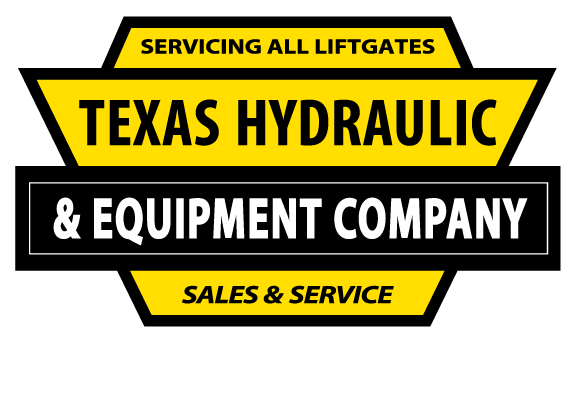What Are the Different Types of Lift Gates?
DIFFERENT TYPES OF LIFT GATES:
Your liftgate is a pivotal component in your business’s daily function. It operates solely for the purpose of safely and efficiently loading and unloading cargo from your truck, which means that it needs to be reliable, slip-resistant, and it must be able to raise and lower quickly. That way, you can complete jobs efficiently and get to the next one quicker.
Lift Gate For Box Truck
The lift gate installation on box trucks provides a versatile solution for loading and unloading goods, making it easier and faster to move items on and off the vehicle, reducing the overall time it takes for businesses to complete their transportation tasks.
Also, your truck’s liftgate must be configured in a way that works best for the specific job at hand. Below, we’re going to cover an overview of the most common liftgate varieties used in the field, along with some key considerations you’ll need to keep in mind when making the decision on which liftgate to use.
Tuck-Under Lift Gates
A tuck-under liftgate is designed to stay packed away until you need to engage it. As its name implies, a tuck-under liftgate tucks right under your truck and away from the cargo entrance, enabling you to be able to back up trucks to loading docks without your liftgate getting in the way. As a result of its design, you’ll have complete access to your truck’s cargo doors as if there’s no liftgate at all.
Standard models are level between the bed and the ground. They’ll then tilt slightly to form a ramp, which allows for the easy rolling and removal of pallets and other cargo on and off your truck. Tuck-Under Liftgates are among the most popular options and are especially popular for dock-height trucks that may not always require a liftgate for loading and unloading cargo.
Cantilever Lift Gates
A cantilever liftgate allows the operator to keep cargo level during the loading and unloading process, regardless of the terrain. A cantilever liftgate has a very large platform, which affords you the option to load from the rear or the sides of the platform. In order to keep things even, the operator can easily adjust the tilt of the platform as needed.
Cantilever liftgates are less labor-intensive because there’s no manual folding or unfolding required of the platform. They typically come equipped with remote controls that power the platform up and down for convenience. These lifts usually come pallet compatible and cart-friendly, thanks to certain design options like cart stops.
Rail-Lift Gates
Like the previous liftgate designs mentioned, rail-liftgates have their own specific applications that are most optimum for use. These liftgates lay flat against the rear of the body when they’re not being used. When the rail-liftgate is engaged, it provides a large and level platform for optimal stability. They’re perfect for loading and unloading heavy and cumbersome items at street level.
The level ride cycle keeps alignment with the truck bed during use, and it's able to do so thanks to the straight up-and-down movement of the platform. The key drawback of a rail liftgate is that it will cover a portion of the rear doorway when not engaged, making it necessary to lower the liftgate in order to access the cargo area. However, this doesn’t cause too much hassle, as you’re able to lower the liftgate straight down in order to gain access to the doorway without having to fully engage the liftgate.
Things to Consider
When considering which liftgate type will best suit your business’s needs, you’ll want to consider these important factors.
Firstly, depending on the type of cargo you’ll be transporting, and whether you’ll be using a pallet jack, cart, or dolly, you’ll need to ensure that the system you choose will be able to accommodate that equipment—and this will largely be based on the liftgate’s size and configuration.
For example, Tuck-under liftgates provide a slight tilt when the arms reach the ground in order to roll things on and off the truck. Whereas rail-liftgates provide a completely flat surface from the bed to the ground. When in doubt, determine whether it’s a level ride platform, which stays level with the truck bed throughout the entire raising and lowering process, or if it’s a standard ride platform, which tilts at an angle slightly towards the ground to form a ramp.
One of the most important things to consider is the weight capacity of the liftgate and its overall dimensions. This will help to ensure it is compatible with your business’s specific type of cargo. Keep in mind that when determining the capacity for your liftgate, it’s not just about the cargo—you’ll also have to consider the added weight of your pallet jack, driver, second handler, and anything else that may be on the liftgate during its operation. Take all of the potential factors of added weight into account and allow for additional weight if ever in doubt.
Contact Us for Expert Service and Repair
Texas Hydraulic & Equipment in Dallas specializes in electric liftgates and prides itself on expert service and repair. We’ve been the go-to liftgate repair shop since 1945, not only for local businesses and school districts but also for many of the nation’s largest companies with operations in the DFW Metroplex.
If you need to invest in new equipment to ensure your business can handle those bigger jobs, are in need of repairs, or if you’re simply interested in learning more about the different kinds of liftgates available, then contact Texas Hydraulics in Dallas today.
Featured Image: Siwakorn1933/Shutterstock

